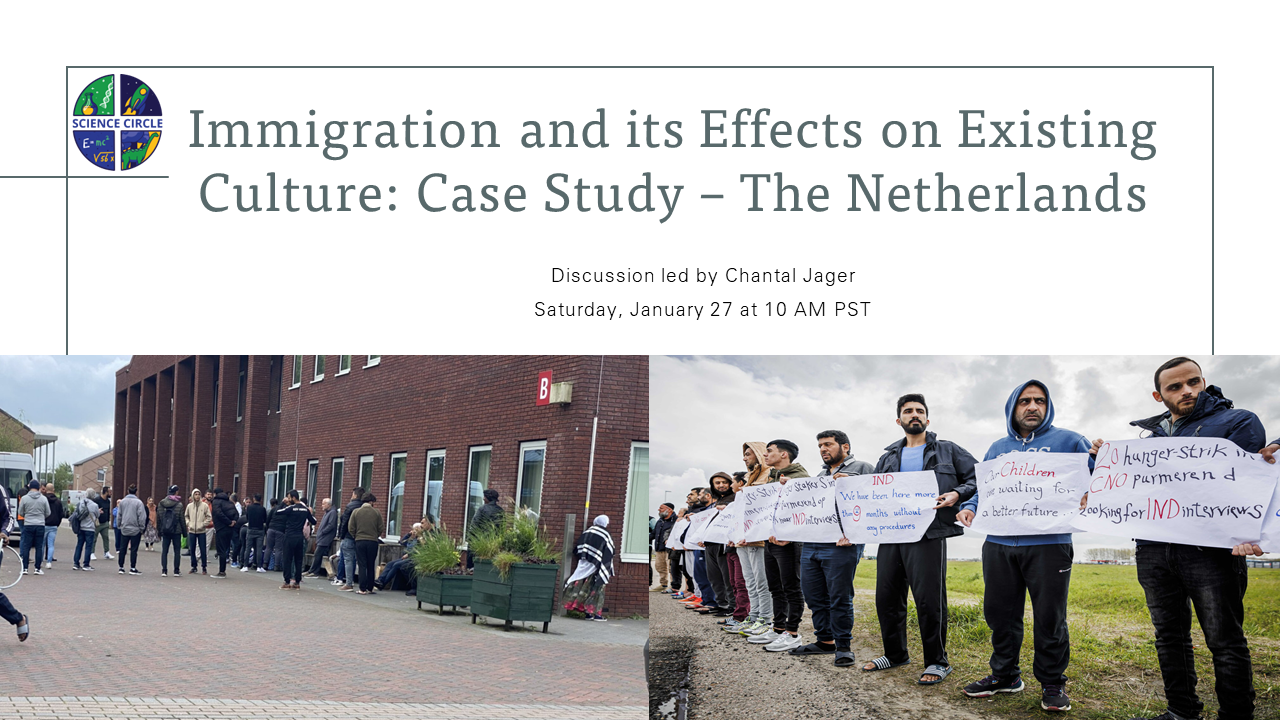
- This event has passed.
Immigration and its Effects on Existing Culture: Case Study – The Netherlands
January 27 @ 10:00 AM - 11:00 AM PST
Free
Immigration and its Effects on Existing Culture: Case Study – The Netherlands
Historic Issue: What Happens When Cultures Meet?
—Immigration (people moving into an area with an existing culture, here defined as including either permanent or temporary residence, either invited or forced) has been a near universal phenomenon throughout history. Here are some ways that it has worked, or not, in the past:
(1) One group displaced the other.
— In days not long past, one group might kill everyone, force them into virtual slavery, take the women as wives, or a combination of these actions. People from the dominant culture might also assimilated the other so their cultural identity was lost. Examples?
(2) People from one culture drove out others.
—Can you think of examples from the distant and recent past?
(3) People from different cultures live separately.
—People from different cultures form enclaves and not mix with others. Examples?
(4) People adopt parts of the other culture.
—People from each culture adopt what they like from the other. Many cultures have adopted food and some customs and words from others. Examples?
Case Study: Immigration in the Netherlands
Ref: The Dutch Migration U-Turn
—The Netherlands was seen as the model of multi-culturalism in Europe for decades. In the 1960s, permanent immigrants arrived from former Dutch colonies (primarily Indonesia and Suriname). In the 1980s, temporary workers were invited from Mediterranean countries with lower levels of employment (such as Greece, Italy, Spain, Turkey, and Morocco). While some European countries tried to reduce immigration, the Netherlands welcomed them to work and set up their own religious and educational institutions, providing them with subsidized housing, education, and health care.
—By the 1990s, the Dutch started to feel cultural and economic pressures from their open immigration policy, which was heightened by temporary workers staying and bringing in their families. In the 2000s, government policy started to reverse so that immigrants had to pass an Integration Exam, testing their knowledge of Dutch society and proficiency in the Dutch language.
—There is no general consensus today on immigrant policy among the Dutch people, but the number of immigrants in their country has doubled in the last decade and right-wing politicians who support tougher measures are becoming more popular.
Discussion led by Chantal Jager
Details
- Date:
- January 27
- Time:
-
10:00 AM - 11:00 AM PST
- Cost:
- Free
- Website:
- http://maps.secondlife.com/secondlife/The%20Science%20Circle/225/230/28
Venue
- The Lighthouse Café
Organiser
- Chantal Jager
